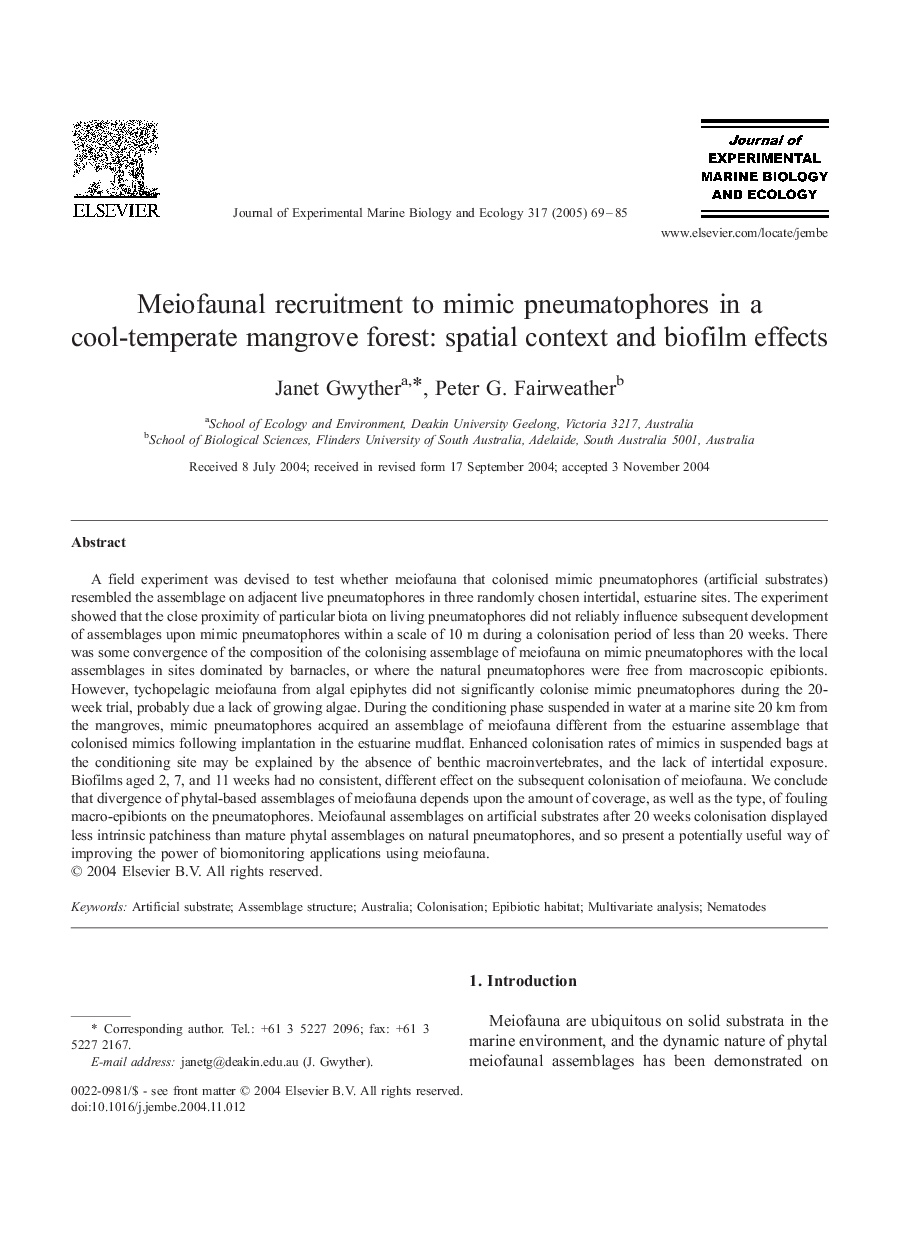| Article ID | Journal | Published Year | Pages | File Type |
|---|---|---|---|---|
| 9448850 | Journal of Experimental Marine Biology and Ecology | 2005 | 17 Pages |
Abstract
A field experiment was devised to test whether meiofauna that colonised mimic pneumatophores (artificial substrates) resembled the assemblage on adjacent live pneumatophores in three randomly chosen intertidal, estuarine sites. The experiment showed that the close proximity of particular biota on living pneumatophores did not reliably influence subsequent development of assemblages upon mimic pneumatophores within a scale of 10 m during a colonisation period of less than 20 weeks. There was some convergence of the composition of the colonising assemblage of meiofauna on mimic pneumatophores with the local assemblages in sites dominated by barnacles, or where the natural pneumatophores were free from macroscopic epibionts. However, tychopelagic meiofauna from algal epiphytes did not significantly colonise mimic pneumatophores during the 20-week trial, probably due a lack of growing algae. During the conditioning phase suspended in water at a marine site 20 km from the mangroves, mimic pneumatophores acquired an assemblage of meiofauna different from the estuarine assemblage that colonised mimics following implantation in the estuarine mudflat. Enhanced colonisation rates of mimics in suspended bags at the conditioning site may be explained by the absence of benthic macroinvertebrates, and the lack of intertidal exposure. Biofilms aged 2, 7, and 11 weeks had no consistent, different effect on the subsequent colonisation of meiofauna. We conclude that divergence of phytal-based assemblages of meiofauna depends upon the amount of coverage, as well as the type, of fouling macro-epibionts on the pneumatophores. Meiofaunal assemblages on artificial substrates after 20 weeks colonisation displayed less intrinsic patchiness than mature phytal assemblages on natural pneumatophores, and so present a potentially useful way of improving the power of biomonitoring applications using meiofauna.
Keywords
Related Topics
Life Sciences
Agricultural and Biological Sciences
Aquatic Science
Authors
Janet Gwyther, Peter G. Fairweather,
